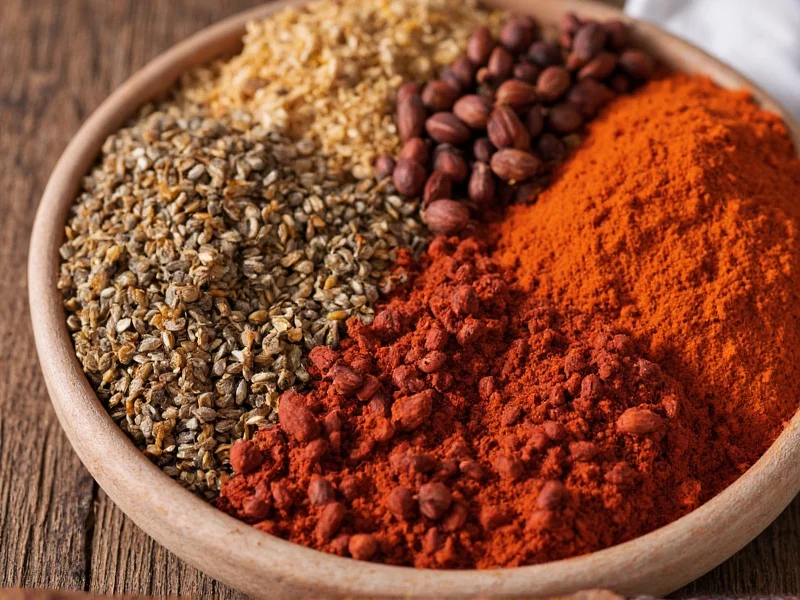Defining the Scope of Asian Spices
When discussing what are Asian spices, it's essential to recognize Asia's culinary diversity. The continent spans multiple regions, each with unique spice traditions. South Asian spices (India, Pakistan, Bangladesh) feature warm, earthy notes. East Asian spices (China, Japan, Korea) emphasize balance and subtle complexity. Southeast Asian spices (Thailand, Vietnam, Indonesia) showcase bright, aromatic profiles. This regional variation explains why no single definition captures all common Asian spices used in authentic cooking.
Essential Asian Spices by Region
| Region | Key Spices | Signature Flavor Profile |
|---|---|---|
| South Asia | Turmeric, Cumin, Coriander, Cardamom, Mustard Seeds | Warm, earthy, complex with varying heat levels |
| East Asia | Star Anise, Szechuan Peppercorns, Five-Spice Powder, Shiso | Subtle, balanced, often featuring numbing or floral notes |
| Southeast Asia | Lemongrass, Galangal, Kaffir Lime, Turmeric, Shrimp Paste | Bright, citrusy, aromatic with pungent undertones |
Core Asian Spices and Their Culinary Applications
Turmeric (Curcuma longa)
This vibrant yellow root appears in nearly all South and Southeast Asian cuisines. Beyond providing color to curries and rice dishes, turmeric offers earthy, slightly bitter notes with peppery undertones. Fresh turmeric works better in Thai and Vietnamese dishes, while dried powder dominates Indian recipes. Many home cooks seek best substitutes for Asian spices like turmeric, though saffron or annatto only partially replicate its unique flavor.
Ginger and Galangal
While Western cooking primarily uses ginger, Asian cuisines distinguish between ginger (Zingiber officinale) and its cousin galangal (Alpinia galanga). Ginger delivers sharp, citrusy heat perfect for stir-fries and marinades. Galangal, essential in Thai curry pastes, offers more floral, pine-like notes with less heat. Understanding this difference between ginger varieties in Asian cooking prevents recipe failures.
Star Anise and Szechuan Peppercorns
Star anise's sweet licorice flavor anchors Chinese five-spice powder and Vietnamese pho broth. Szechuan peppercorns don't burn like chili peppers—they create a tingling sensation called ma la. This unique mouthfeel defines Szechuan cuisine. When exploring authentic Chinese spice blends, these ingredients prove indispensable.
Signature Spice Blends Across Asia
Garam Masala (India)
This warm, complex blend typically contains cardamom, cinnamon, cloves, cumin, and coriander. Unlike curry powder (a Western creation), garam masala varies by region and family. Northern versions feature more black pepper, while Southern blends incorporate nutmeg. The difference between garam masala and curry powder lies in preparation—garam masala often finishes dishes, while curry powder typically starts them.
Chinese Five-Spice Powder
Representing the five elements (wood, fire, earth, metal, water), this blend balances sweet (star anise), sour (fennel), bitter (cloves), salty (salt), and spicy (Szechuan pepper). Home cooks searching for where to buy Asian spices online often start with this versatile mix, which enhances everything from roasted meats to braised vegetables.
Thai Curry Pastes
Unlike dry spice blends, Thai curries begin with wet pastes combining fresh ingredients like lemongrass, galangal, and kaffir lime leaves with dried spices. Red curry paste features dried chilies, while green uses fresh. The authentic Thai curry paste ingredients list reveals why store-bought versions rarely match homemade—freshness matters.
Practical Tips for Using Asian Spices
Storage Techniques
Whole spices maintain potency longer than ground versions. Store them in airtight containers away from light and heat. For maximum flavor in traditional Asian cooking techniques, toast whole spices briefly in a dry pan before grinding. This simple step releases essential oils that transform dishes.
When to Add Spices During Cooking
Timing affects flavor development significantly. Add whole spices like cinnamon sticks or cardamom pods early to infuse oils. Incorporate ground spices after aromatics (onion, garlic) to prevent burning. Stir delicate ingredients like fresh curry leaves or basil at the end. Mastering these Asian spice cooking methods separates adequate dishes from exceptional ones.
Finding Quality Ingredients
Specialty Asian markets offer the freshest selection, but many common Asian spices available in supermarkets work well for beginners. Look for vibrant colors and strong aromas—dull or musty spices have lost potency. For hard-to-find items like fresh galangal or kaffir lime leaves, frozen versions often outperform dried alternatives.
Health Benefits and Cultural Significance
Asian spice traditions intertwine culinary and medicinal practices. Turmeric's anti-inflammatory properties feature prominently in Ayurvedic medicine. Ginger aids digestion across multiple Asian cultures. The health benefits of turmeric in traditional Asian medicine extend beyond cooking—many households maintain spice pantries partly for wellness. This holistic approach explains why Asian cuisines treat spices as functional ingredients, not just flavor enhancers.
FAQ Section
What are the most essential Asian spices for beginners?
Start with ginger, garlic, turmeric, and chili peppers—these form the flavor base for countless Asian dishes. Add soy sauce, fish sauce, and rice vinegar for liquid seasonings. Once comfortable, explore regional specialties like Szechuan peppercorns or lemongrass.
Can I substitute garam masala for curry powder?
Not directly. Garam masala contains warmer spices (cinnamon, cardamom) added late in cooking, while curry powder features more turmeric and chili added early. For closest results, combine equal parts cumin, coriander, and a pinch of cinnamon as a temporary substitute.
Why does my homemade curry taste different from restaurant versions?
Restaurant curries often use freshly ground spice blends and technique secrets like tempering spices in hot oil first. They may also incorporate ingredients like kaffir lime leaves or makrut lime that home cooks omit. Focus on proper spice blooming and using fresh aromatics for better results.
How do I properly store Asian spices to maintain freshness?
Keep whole spices in airtight containers away from light and heat—they last 1-2 years. Ground spices lose potency faster (6-12 months). Freeze fresh spices like galangal or turmeric root for extended use. Never store spices above the stove where heat degrades them.
What's the difference between regular black pepper and Szechuan peppercorns?
Szechuan peppercorns aren't true peppers—they're berries from the prickly ash tree. They create a tingling, numbing sensation (ma la) rather than burning heat. Black pepper delivers sharp, floral heat. The difference between Szechuan peppercorns and regular pepper is fundamental to authentic Szechuan cuisine.











 浙公网安备
33010002000092号
浙公网安备
33010002000092号 浙B2-20120091-4
浙B2-20120091-4